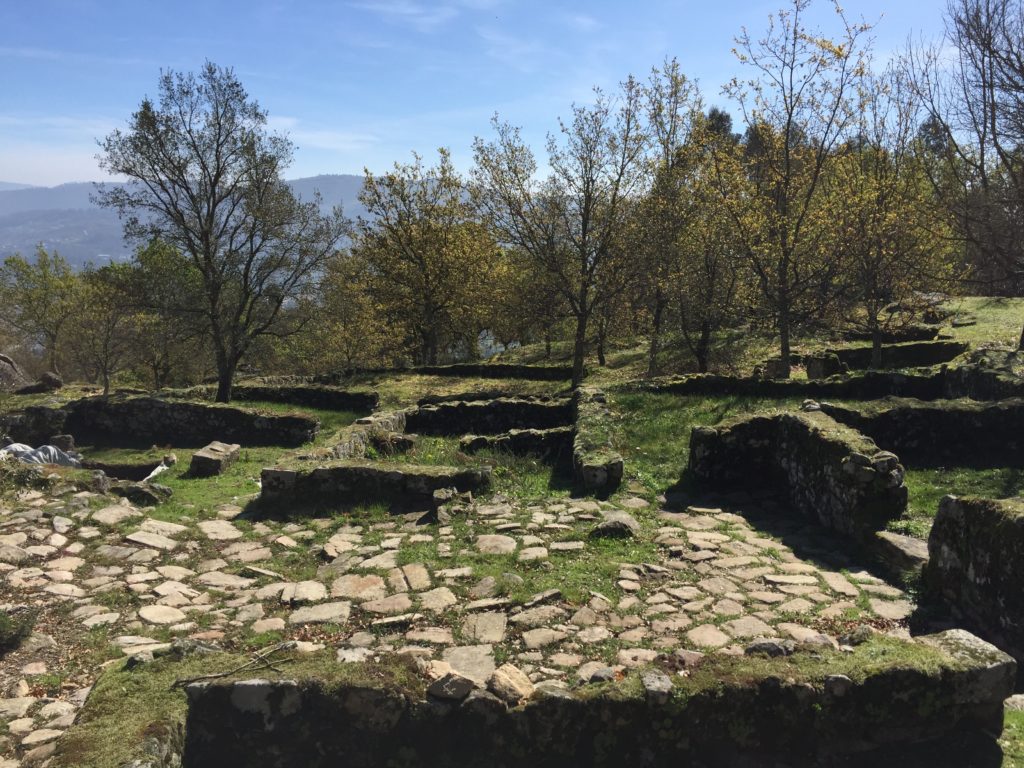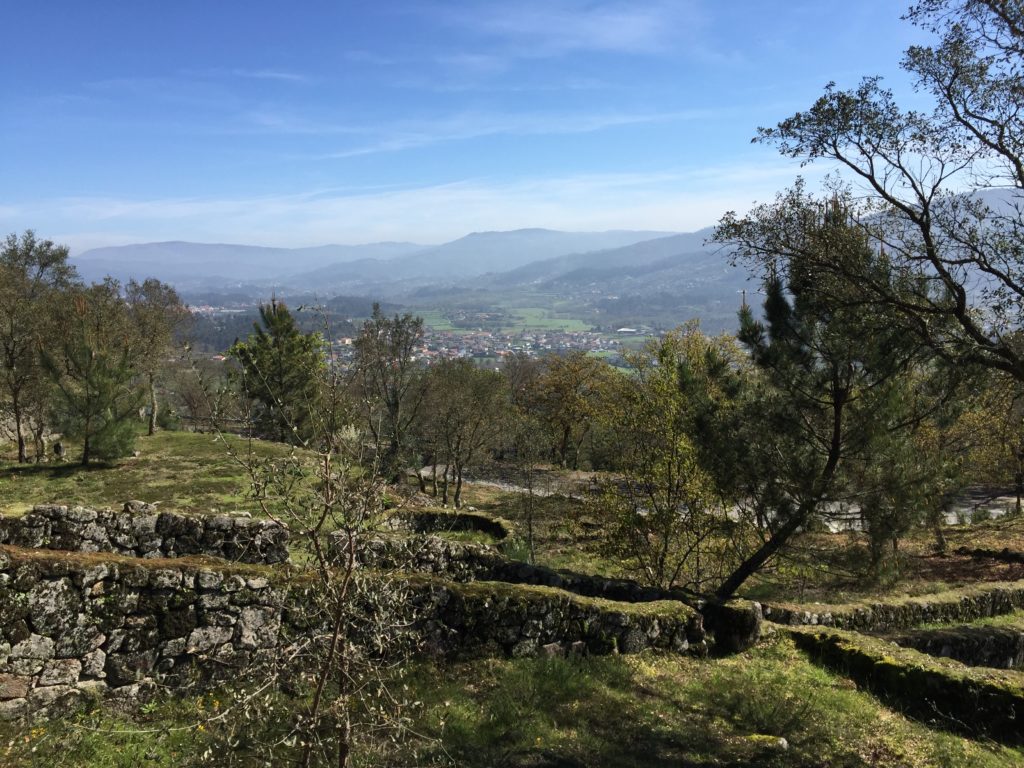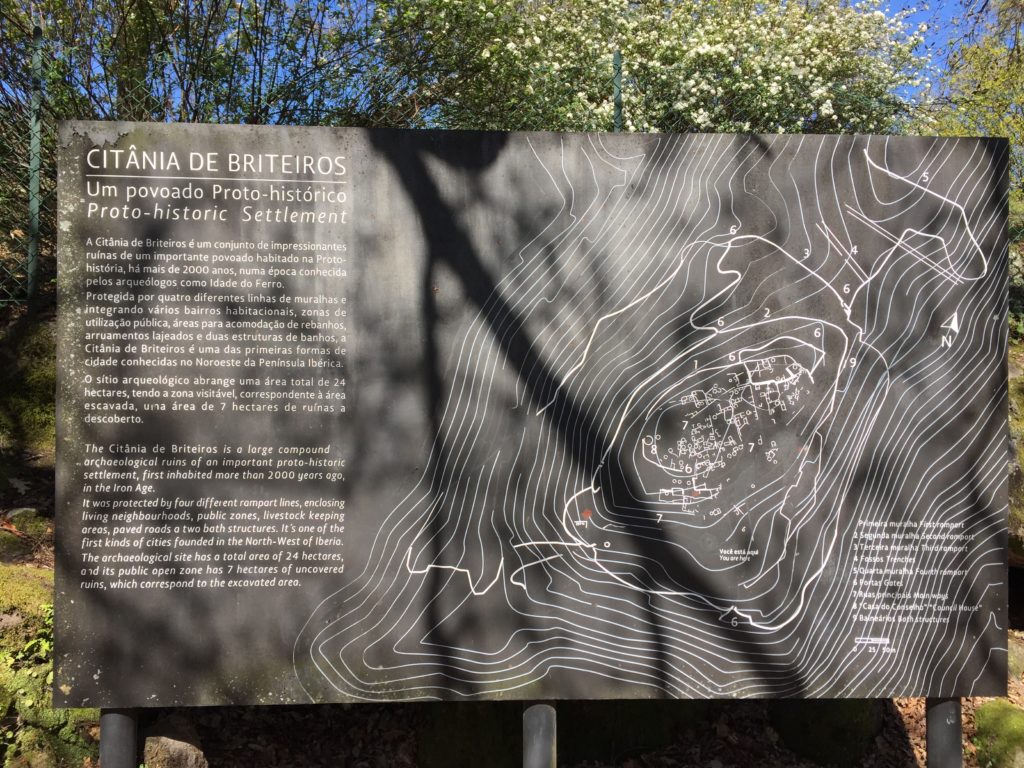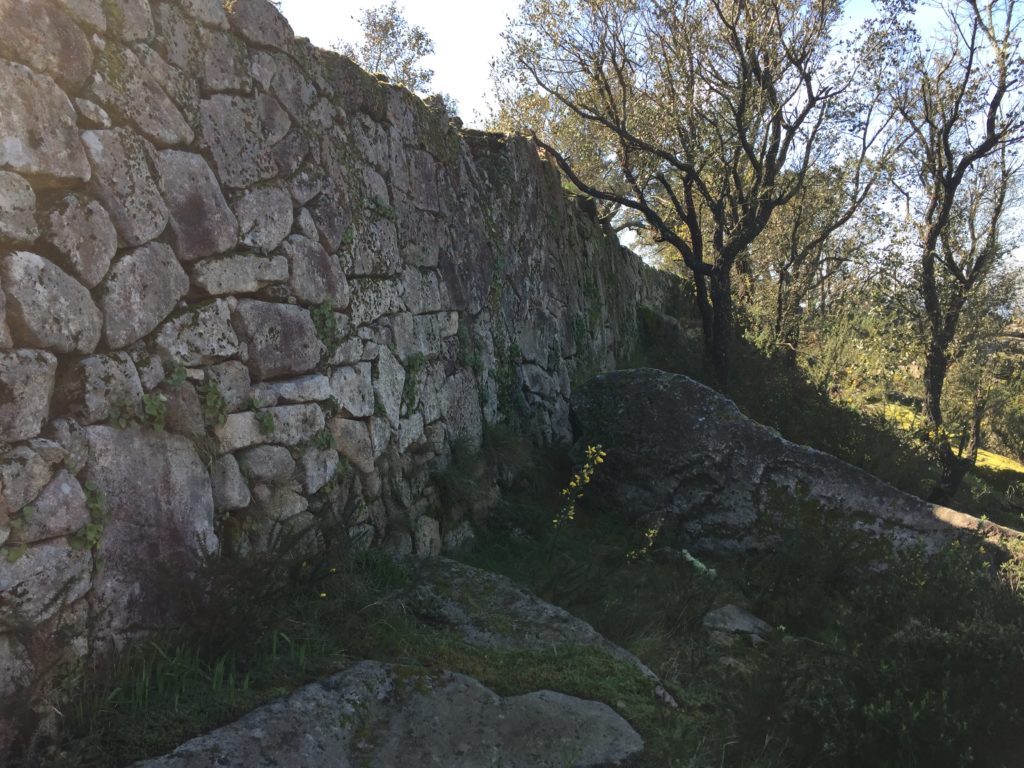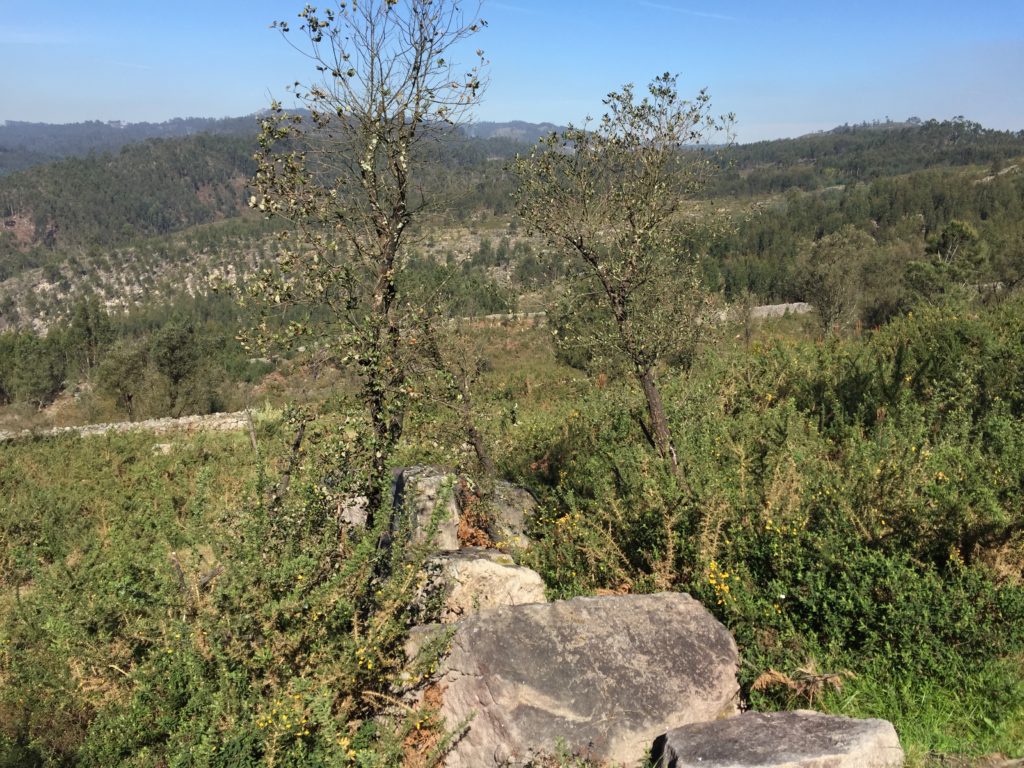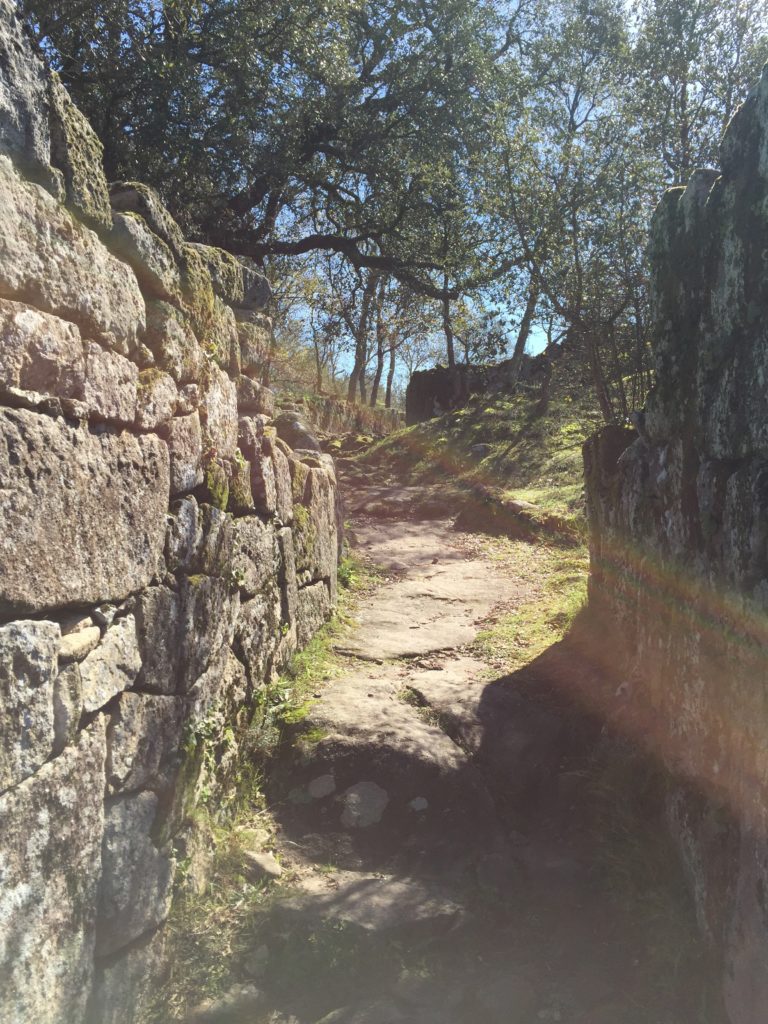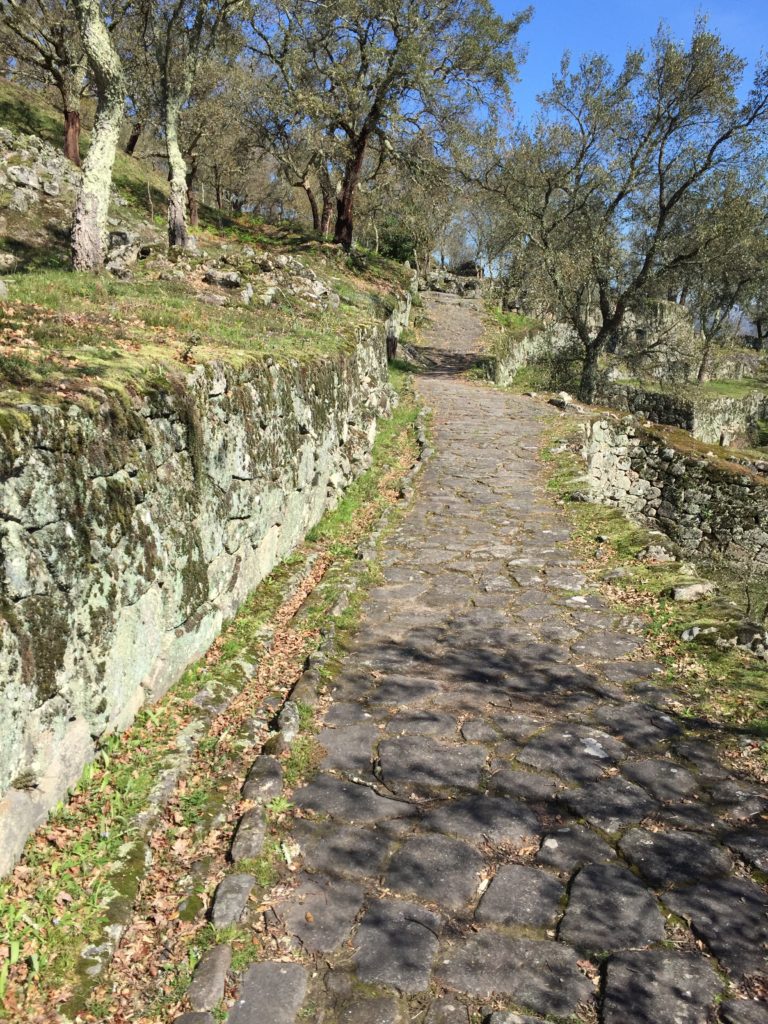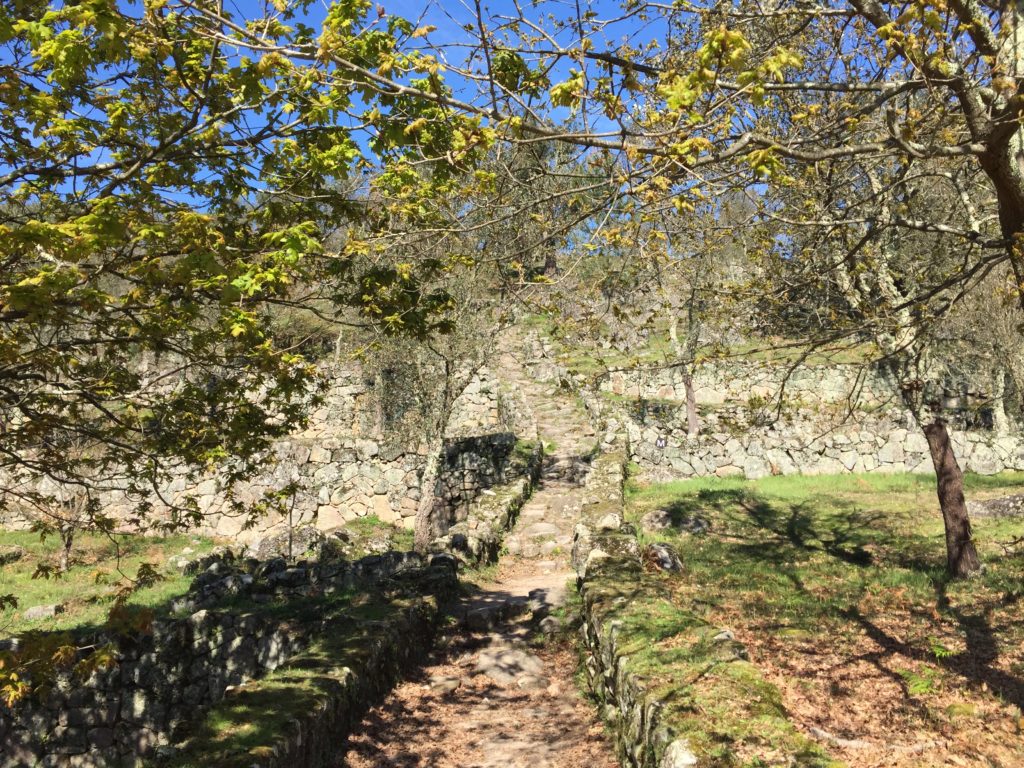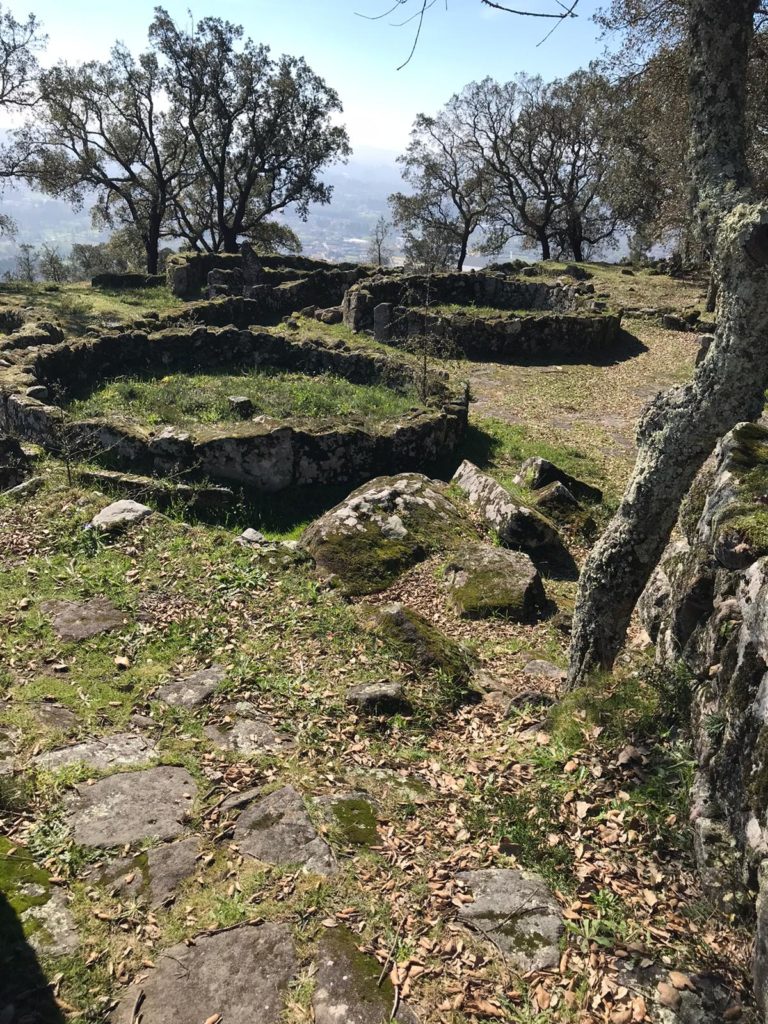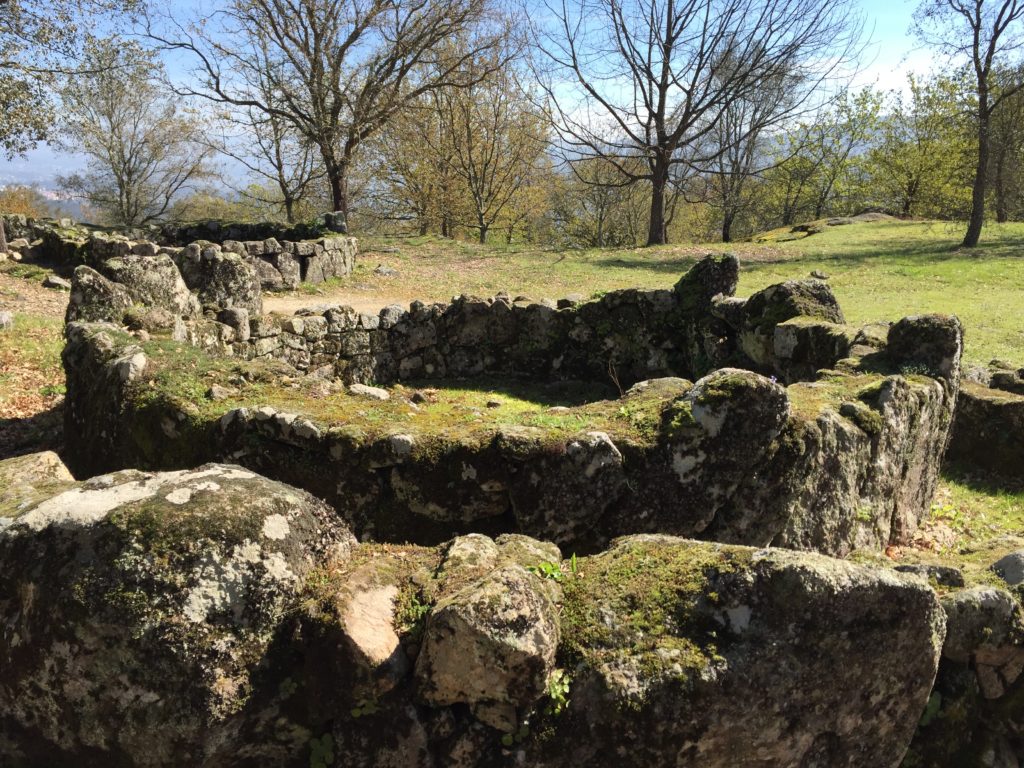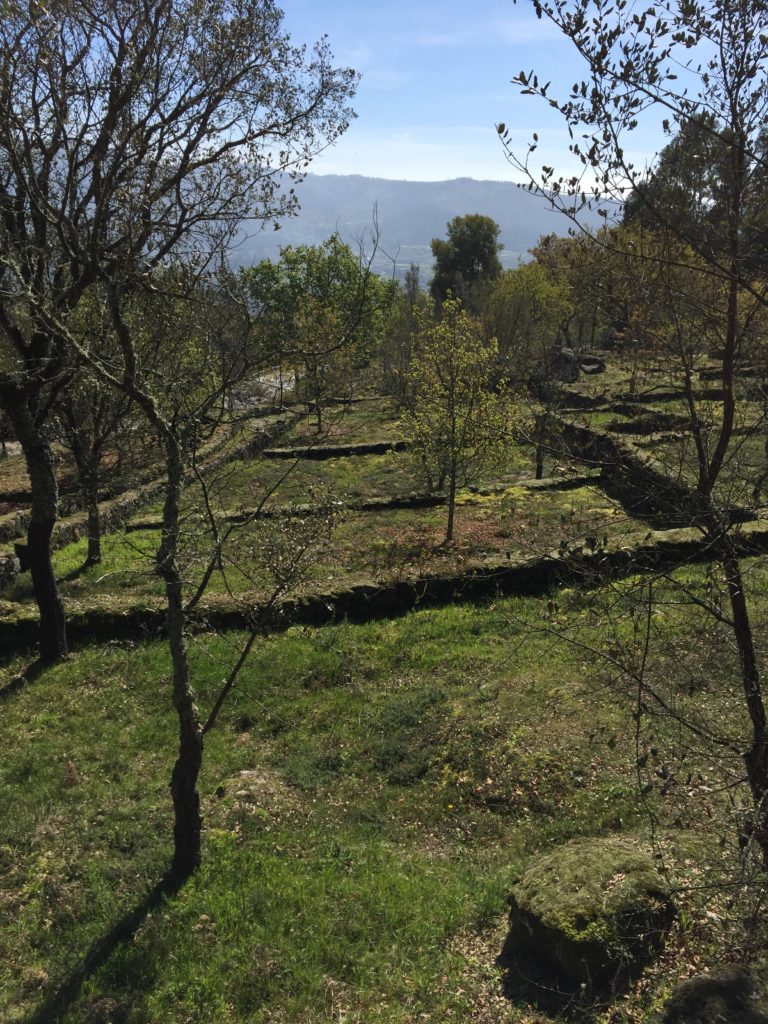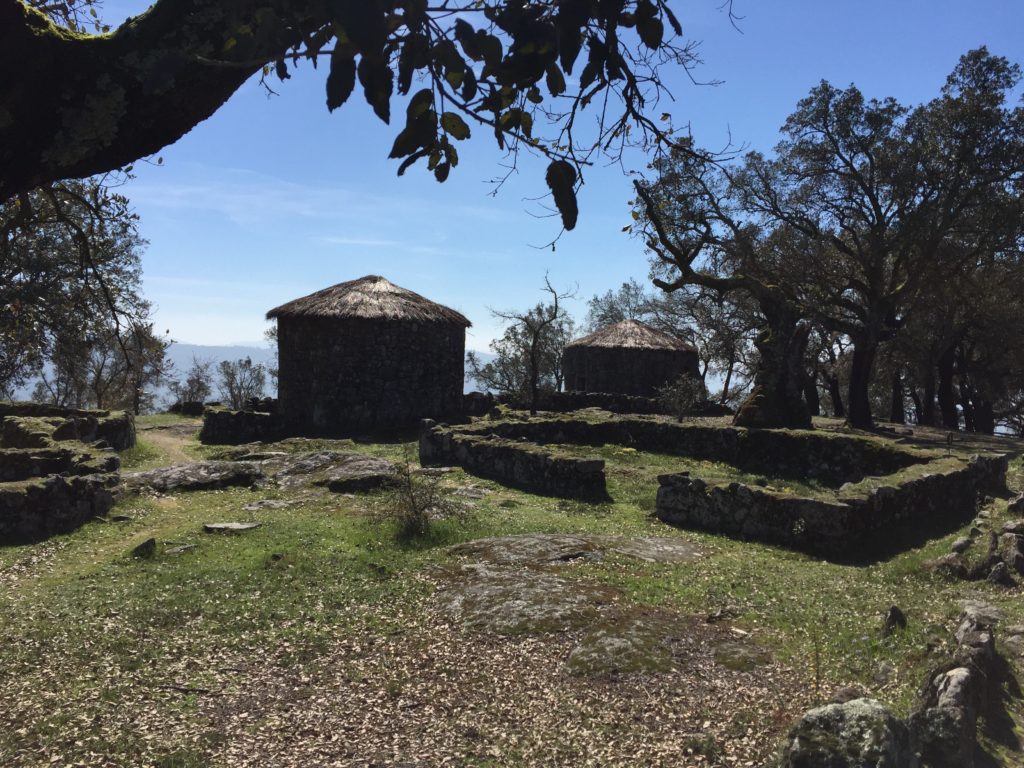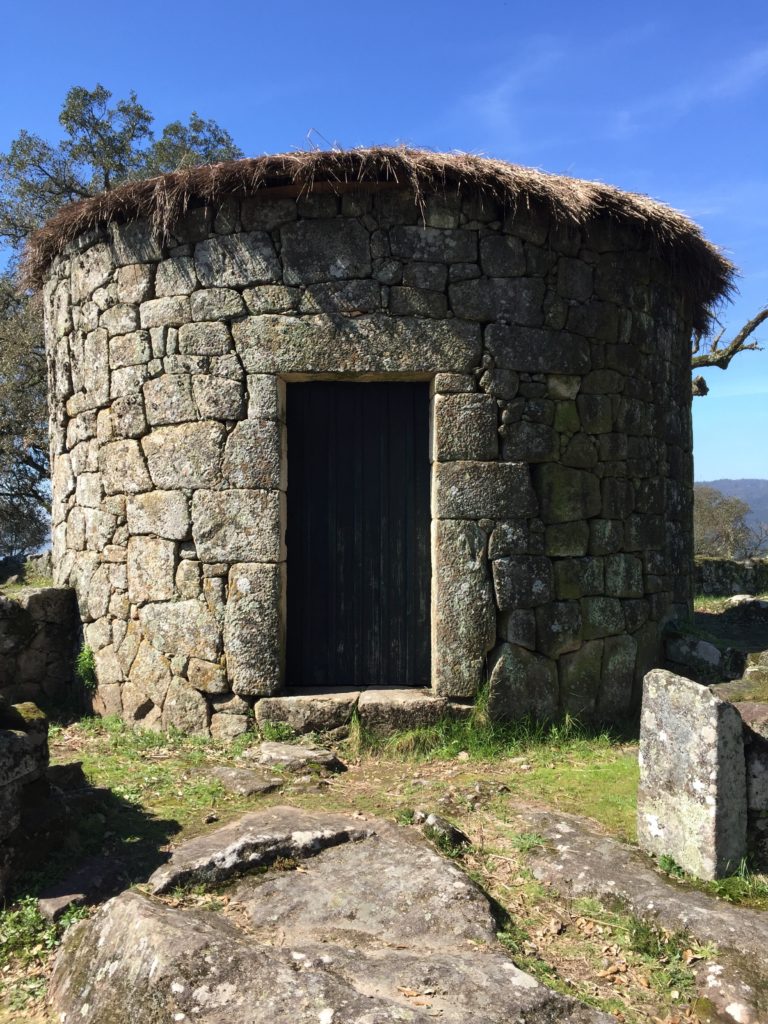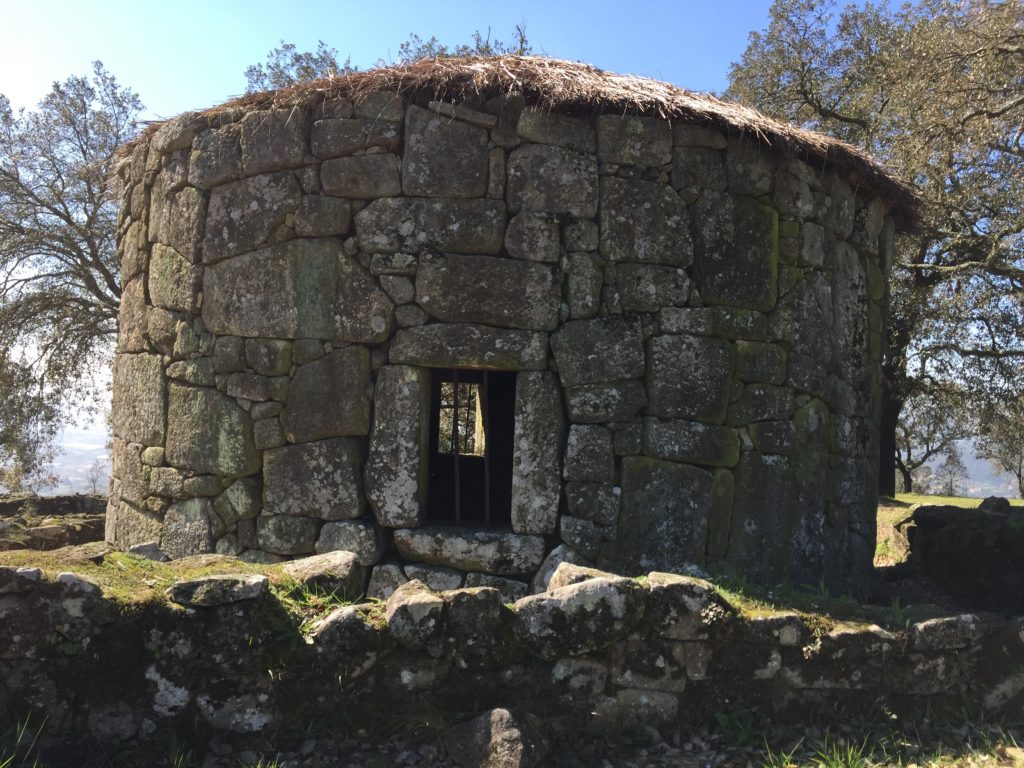On a recent trip to Portugal, I had an opportunity to visit the Citânia De Briteiros, an ancient Celtic hill fort and settlement located in the Guimaraes region of the country. First excavated in 1875, the site was initially occupied between the first and second centuries BCE, with continued habitation extended to the second or third centuries CE. The village is located on a high ridge and offers a commanding view of the Ave River and lush valleys below.
As pictured on the site documentation shown below, the village consisted of about 100 residential compounds including the foundation of small stone buildings, and covered an area of 24 hectares, approximately 250 meters long by 150 meters wide. The village was surrounded by seven defensive walls, noted as the thicker white lines in the representation map.
The walls are extensive, and today measure 1 to 3 meters thick and less than 2 meters high. However, a section of the walls restored by the original excavator Francisco Martins Sarmento measures almost 4 meters in height. The walls were built using the “dry stone” method, devoid of mortar. A tremendous amount of effort was expended on these walls, which would indicate a need for a high level of defense from neighbors (and possibly Romans!).
Two sets of the walls surround the village, while other area walls provide protection further down the hill:
The settlement is criss-crossed by elaborate stone pathways, which lead through the defensive walls in a number of locations as shown below.
The pathways often have drainage channels at the side, and along with low stone walls may have served as borders delineating the sides of family compounds.
The roughly placed stones on these paths make walking difficult, but perhaps the inhabitants preferred that to walking on the alternative: muddy unpaved lanes.
The foundations for many of the houses are circular, and are interpreted by the archaeologists as the dwellings of the original Celtic inhabitants.
Other houses or family compounds are square in shape, and believed by some archeologists to represent a later stage in the village’s development, when the original Celtic inhabitants were either replaced by or influenced by increasing Roman settlement of the area.
Two Celtic era round houses have been reconstructed, and offer an interesting impression about how life was lived in the settlement:
In any case, a visit to the site is well worth the drive, and offers a revealing look at Celtic settlement in the Iberian Peninsula prior to and during the Roman occupation.
___
Ian Joseph is a member of the Kosmos Society. All photographs are by the author.
